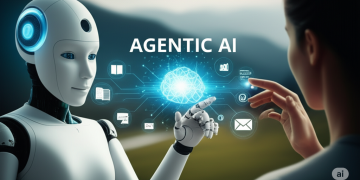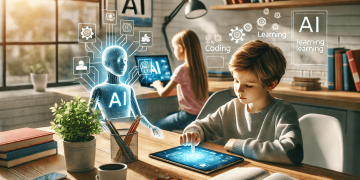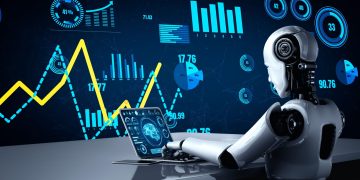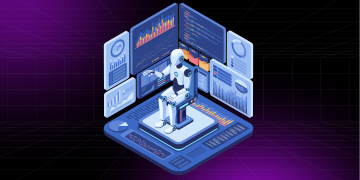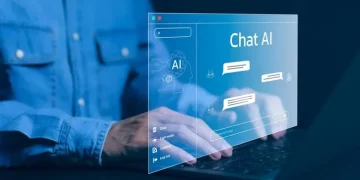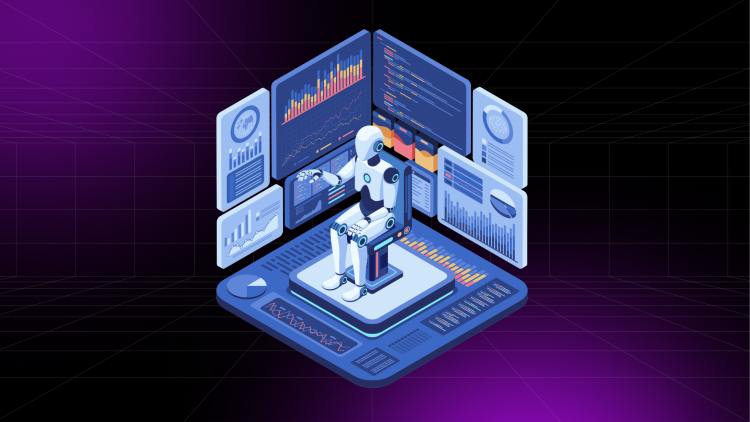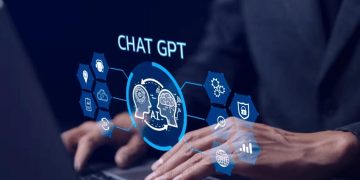Introduction
The advent of artificial intelligence (AI) has reshaped numerous industries, from healthcare and finance to entertainment and manufacturing. However, the true revolution in AI may not only be the algorithms or systems themselves but the open-source tools and frameworks that have enabled innovation to flourish. Open-source AI tools have emerged as a cornerstone of the AI ecosystem, democratizing access to powerful AI models and fostering collaboration across the global developer community.
Open-source AI is transforming the landscape of machine learning (ML), deep learning (DL), and natural language processing (NLP). These tools not only empower developers and researchers to build advanced AI applications but also lower the barrier to entry for those who might not have access to expensive proprietary software. This article explores the rise of open-source AI tools, the key frameworks driving their adoption, the benefits and challenges associated with their use, and the future implications for the AI field.
1. The Open-Source Philosophy and Its Impact on AI Development
What Is Open-Source AI?
Open-source AI refers to the practice of making AI tools, libraries, and frameworks publicly available, allowing anyone to access, modify, and distribute them. Unlike proprietary software, which is owned and controlled by a specific company or individual, open-source tools are typically developed and maintained by a community of contributors. This model encourages collaboration, transparency, and rapid innovation.
In the context of AI, open-source tools often include machine learning libraries, pre-trained models, and frameworks for data processing, algorithm development, and model evaluation. The accessibility of these tools has allowed researchers, developers, and even hobbyists to experiment with and create AI applications, accelerating the pace of AI advancement.
The Growth of the Open-Source Movement
The open-source movement in AI is part of a broader trend in software development. Originally popularized by Linux and later embraced by major tech companies, the open-source philosophy has now taken root in AI. Early pioneers such as TensorFlow, PyTorch, and Keras have demonstrated the value of open-source frameworks in AI, providing the foundation for many of the advances in machine learning and deep learning over the past decade.
As the AI field grew in complexity, the need for robust, scalable, and flexible tools became clear. Open-source AI tools fulfilled this need by enabling collaboration and ensuring that AI technologies could evolve quickly and organically. These tools are now being used by startups, research institutions, and large enterprises alike, contributing to the fast-paced nature of AI innovation.
2. Leading Open-Source AI Frameworks
Several open-source AI tools have become fundamental to the development of modern AI applications. These tools are used for a wide range of tasks, including machine learning, deep learning, natural language processing, and computer vision. Below, we explore some of the most prominent frameworks and libraries:
TensorFlow: The Pioneer of Open-Source AI
Developed by Google Brain and released in 2015, TensorFlow is one of the most widely used open-source AI frameworks. It is particularly known for its versatility in machine learning and deep learning tasks, from training simple models to complex neural networks. TensorFlow’s popularity stems from its comprehensive ecosystem, which includes tools for data processing, model training, and deployment.
One of TensorFlow’s most significant contributions to the AI community is its ability to scale across different environments, from personal laptops to large cloud infrastructures. It also offers an intuitive high-level API called Keras, which simplifies the process of building and training deep learning models. TensorFlow has a strong community of contributors, making it continuously updated with new features, optimizations, and research papers.
PyTorch: The Favorite of Researchers
Developed by Facebook’s AI Research Lab (FAIR), PyTorch has gained significant traction in the AI community, particularly among researchers and academics. Launched in 2016, PyTorch has become the preferred deep learning framework for many researchers due to its dynamic computational graph, which allows for more flexible and intuitive model-building. This feature enables real-time debugging and greater experimentation, which is essential in cutting-edge AI research.
PyTorch’s growing popularity can also be attributed to its seamless integration with Python, making it easy to learn and use. Like TensorFlow, PyTorch supports both CPU and GPU computations, making it highly scalable. The framework also boasts a thriving ecosystem of libraries for specialized tasks, such as TorchVision for computer vision and TorchText for NLP.
Keras: Simplifying Deep Learning
Originally developed as an independent high-level neural networks API, Keras was integrated into TensorFlow in 2017 as its official high-level API. Keras is renowned for its simplicity and user-friendliness, making it an excellent choice for beginners and those who want to quickly prototype deep learning models. Its concise syntax and intuitive design enable developers to focus on building models rather than dealing with the complexities of low-level implementation.
Keras supports a wide variety of neural network types, including convolutional and recurrent neural networks, and is capable of running on top of TensorFlow, Theano, and Microsoft Cognitive Toolkit (CNTK). Its integration with TensorFlow has made it a powerful tool for building production-grade AI applications.
Scikit-Learn: The Workhorse of Machine Learning
Scikit-learn is one of the most widely used Python libraries for machine learning, known for its ease of use and comprehensive suite of tools for data analysis and model building. Scikit-learn includes a wide variety of algorithms for classification, regression, clustering, and dimensionality reduction, making it ideal for both beginners and experienced practitioners.
While it is not designed for deep learning (unlike TensorFlow and PyTorch), Scikit-learn remains an essential tool for many AI tasks, particularly in classical machine learning, feature engineering, and model evaluation. Its popularity is largely due to its integration with other Python libraries, such as Pandas for data manipulation and Matplotlib for data visualization.
Hugging Face: The Leader in Natural Language Processing
In recent years, Hugging Face has emerged as a key player in the field of Natural Language Processing (NLP). Their open-source library, Transformers, provides pre-trained models for a wide range of NLP tasks, such as text classification, question answering, and language translation. Hugging Face’s models, including BERT, GPT-2, and T5, have set new benchmarks in NLP performance.
The Hugging Face ecosystem has become a go-to resource for developers working on cutting-edge NLP applications, thanks to its ease of use, active community, and regular updates. The company has also focused on making their models easy to deploy, enabling developers to integrate state-of-the-art NLP models into their applications with minimal effort.

3. The Benefits of Open-Source AI Tools
Accessibility and Democratization of AI
One of the most significant benefits of open-source AI tools is that they democratize access to cutting-edge technology. In the past, access to AI tools was often limited to large corporations or well-funded academic institutions. Today, anyone with an internet connection can access and use the same frameworks and libraries that power the latest AI innovations. This accessibility has led to a surge in AI-driven startups, as small teams can now compete on equal footing with tech giants.
Moreover, the availability of pre-trained models and open-source algorithms lowers the barrier to entry for individuals and organizations with limited resources. This is especially important in developing regions, where access to AI expertise and infrastructure may be scarce.
Collaboration and Knowledge Sharing
Open-source AI tools foster collaboration and knowledge sharing among developers, researchers, and organizations. These tools are built and maintained by a global community of contributors, which accelerates the pace of innovation. By sharing code, models, and research papers, the AI community can build on each other’s work, pushing the boundaries of what is possible.
Additionally, open-source projects often come with extensive documentation, tutorials, and support forums, making it easier for newcomers to get involved and contribute. This collaborative spirit has led to a more inclusive and transparent AI development environment.
Cost-Effectiveness
Another key advantage of open-source AI tools is their cost-effectiveness. Traditional proprietary software often comes with significant licensing fees, which can be a barrier for small businesses, academic researchers, and startups. Open-source AI tools, on the other hand, are free to use, making them an attractive option for organizations that need to deploy AI solutions but lack the financial resources to invest in expensive proprietary software.
4. Challenges and Limitations of Open-Source AI Tools
Integration and Compatibility Issues
Despite their many advantages, open-source AI tools are not without their challenges. One common issue is integration with existing systems. Since open-source tools are developed by different organizations and communities, they may not always be compatible with each other. This can create difficulties when trying to build complex AI pipelines or integrate AI tools into legacy systems.
Moreover, while the tools themselves are free, organizations still need skilled developers and data scientists to implement them effectively. The lack of a unified platform or standards across open-source tools can lead to additional complexities in deployment and maintenance.
Security and Support
Since open-source AI tools are publicly available, they can be vulnerable to security risks. Without proper oversight, there is a risk that malicious actors could exploit vulnerabilities in open-source libraries, especially when they are used in production systems. Additionally, while open-source projects often have active communities, they may lack the dedicated support infrastructure that is available with proprietary software.
Quality Control and Reliability
Not all open-source AI tools are created equal, and the quality of the code can vary significantly from one project to another. While popular libraries like TensorFlow and PyTorch are well-maintained and widely trusted, some lesser-known projects may have limited documentation, infrequent updates, or unaddressed bugs. Organizations must carefully evaluate the reliability and quality of the open-source tools they choose to use.
5. The Future of Open-Source AI
Increased Industry Adoption
As the benefits of open-source AI become more apparent, we can expect continued adoption by major corporations and industries. Many large companies, including Google, Microsoft, and Facebook, have embraced the open-source model, contributing to the development of key AI frameworks and creating platforms for the community to collaborate.
Expansion into New AI Domains
As AI continues to evolve, open-source tools will expand into new domains, such as autonomous systems, AI-driven healthcare, and edge computing. Open-source frameworks will likely play a key role in enabling innovation across these emerging fields, allowing developers to build and deploy AI solutions that are more efficient and cost-effective.
Greater Collaboration Across Sectors
The future of open-source AI will be marked by even greater collaboration between the tech industry, academic institutions, and governments. These collaborations will help to establish best practices for AI development, ensure ethical standards, and foster the responsible use of AI technologies.
Conclusion
The rise of open-source AI tools has significantly transformed the AI landscape, enabling greater accessibility, collaboration, and innovation. With powerful frameworks like TensorFlow, PyTorch, and Keras driving the development of machine learning and deep learning applications, AI is becoming increasingly democratized. While challenges such as integration, security, and quality control remain, the future of open-source AI looks bright, with continued industry adoption and new opportunities on the horizon.
By fostering an open and collaborative environment, open-source AI is not only accelerating technological progress but also ensuring that the benefits of AI can be shared across all sectors of society.








